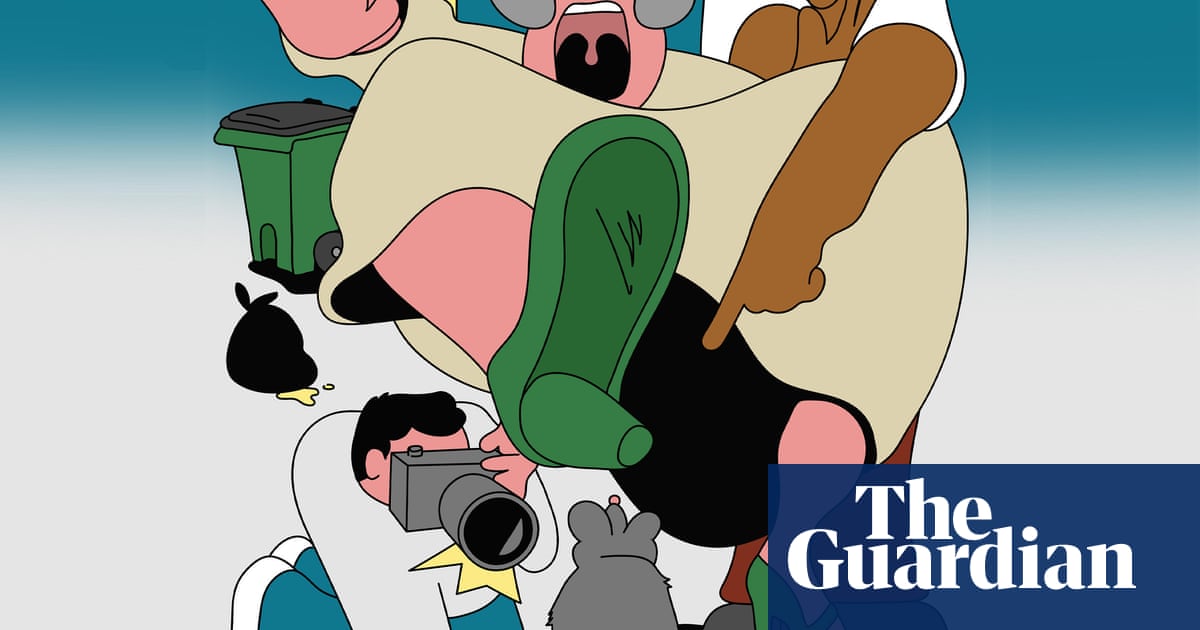For more than eight months now, since shortly after Labour won power, more and more people have been outraged by the government’s moves to the right. Starting with its decision to keep the Conservatives’ cruel two-child benefit cap last July, the government has regularly given these critics reasons to feel shocked, betrayed or just disappointed.
From deportation videos to Keir Starmer’s declaration that “I like and respect” Donald Trump, from repeated public sector cuts to the chancellor Rachel Reeves’s talk of “tearing down regulatory barriers” in this week’s spring statement, Labour has often behaved as if the boundaries between its supposedly centre-left politics and the politics of the right or even the far right have simply melted away.
Even for the millions who have faithfully voted Labour for decades, despite all the party’s flaws, compromises and defeats, Starmer’s premiership is turning out to be extremely, perhaps uniquely, difficult to believe in. The scale of his majority threatens to be matched by the scale of disillusionment.
But are left-leaning Britons right to be so thoroughly disenchanted? Is this Labour government really that different from previous ones? And if so, exactly what kind of government is it?
The last question is quite difficult to answer. In part, this is because the government has been so poor at explaining its overall purpose, despite many different attempts to do so, such as the spring statement’s promise of “an active government” that is “leaner and more agile”. Compared with the last time the party was in power, when New Labour consistently and effectively promoted its plan to modernise Britain, Starmer’s administration both explains itself too much and not enough.
Why Downing Street has not hired or promoted better communicators by now is a mystery as baffling as what Starmer actually believes in. In 2020, according to Patrick Maguire and Gabriel Pogrund’s book on his leadership, Get In, Starmer told colleagues: “I don’t have any ideology at all. There’s no such thing as Starmerism and there never will be. I will make decisions one after the other.” Elected to parliament relatively late in life, and by his own admission more of a problem-solver than an original thinker or compelling speaker, Starmer is an incomplete politician, governing in an era of constant crises and public alienation, when even a more multi-dimensional prime minister would struggle.

Yet the hard-to-define quality of his government is also down to something else. Confusingly mixed in with all its rightwing policies are still a scattering of leftwing and green ones: improving workers’ rights, imposing VAT on private schools, nationalising rail companies, removing the inheritance tax loophole for farmers and promoting clean energy more seriously than any previous British government. Most of these measures are on a smaller scale than their equivalents proposals under Jeremy Corbyn. But they remain more egalitarian, class-conscious and restrictive of capitalism than the policies of Tony Blair or Gordon Brown.
In the latest issue of the centre-left journal Renewal, the historian Nick Garland, who wrote speeches for Reeves when she was shadow chancellor, sums up the Starmer government as “plain old Labour” – by which he means it is part of the pre-Blair tradition of Labour governments consciously building on each other, to make concrete, cumulative improvements to many lives.
Garland’s argument is convincing, up to a point. While Starmer resists comparing himself to past prime ministers, as part of his effort to elude political definition, he does occasionally express admiration for Harold Wilson, the often derided but effective Labour social reformer of the 1960s and 1970s. And like postwar Labour politicians, Garland continues, the current cabinet “believes in the capacity of the state … partnered with the more dynamic elements of the private sector, to reverse economic decline and remedy Britain’s social ills”. Under Starmer, he concludes, Labour is getting back to what it does best: overseeing unspectacular but unifying national change.
Yet one problem with this interpretation is that it largely ignores Starmerism’s nasty side. His party’s relentless purges of leftwingers and contrasting reverence for reactionary voters are starkly different from Labour under Wilson, who treated the party as a broad church and promoted social liberalism.
Another huge difference is in how the current government deals with financial pressures. Previous Labour premiers faced them, too, and sometimes imposed austerity policies, but the pain was spread much more evenly between the privileged and the disadvantaged. Under Wilson, there was briefly a combined income and investment tax rate of 98% for the highest earners. By contrast, Reeves and Starmer seem to have accepted the self-serving argument from big business and its many media champions that increasing taxes on the rich is both impractical and undesirable – even though many voters and many analysts of the long boom in elite wealth, such as Thomas Piketty, strongly disagree.
So, rather than a revival of postwar social democracy, Starmer’s government feels more like an attempt to create a new political hybrid: part leftwing, part rightwing, intended to appeal to a much more fragmented, politically fickle, less generous country. This toughened-up Labour party prioritises “working people” over the poor, the arms industry and the City of London over the wider economy, and traditional patriotism over more nuanced expressions of British identity. Rather than confront rightwing populism, the government tries to co-opt some of its arguments, for example about the danger of “open borders”. More and more of Labour’s current policies seem designed to appeal to actual or potential Reform voters.
Will this new political model work? Recent attempts by the centre-left to toughen up have failed in other countries, such as Germany and the US. So far, the signs are not promising for Labour, either, judging by the polls and its performance in government. Starmer’s confident periods as opposition leader, when he promised stable government, no scandals, an end to “sticking-plaster politics” and a politics that “treads more lightly on people’s lives”, seem a long time ago.
These are still early days. By the next election, which may not be for four years, his austere, ambiguous government might have done just enough through its more patient policies to beat a divided opposition. Victory over the toxic politics of Reform and the current Tories would still be worth celebrating. But its price might be a Labour party that longterm supporters hardly recognise. And without them, it will become harder and harder to win again.
-
Andy Beckett is a Guardian columnist

 2 months ago
64
2 months ago
64

















































